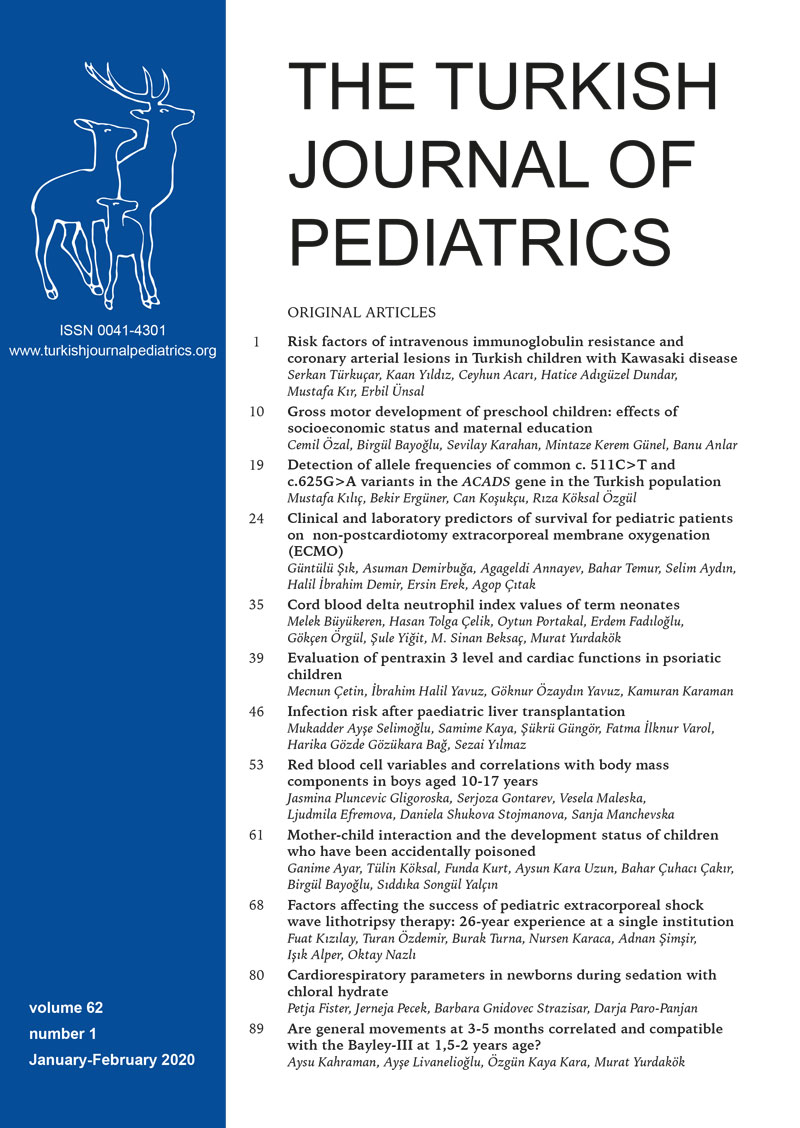Abstract
Kawasaki disease (KD) is the most common cause of childhood coronary artery disease. The incidence of coronary artery lesions (CALs) has declined with the routine use of intravenous immunoglobulin (IVIG) treatment, but there is still considerable risk for resistance to IVIG treatment and development of CALs. The present study was aimed to determine the risk factors in Turkish children with IVIG resistant KD and coronary artery involvement. Clinical, laboratory and echocardiographic data were retrospectively analyzed in 94 Kawasaki patients. IVIG resistant and responsive groups were compared. The IVIG resistant group had a higher rate of CALs compared to the IVIG responsive group (p < 0.05). Duration of fever ≥ 9.5 days, C-reactive protein (CRP) ≥ 88 mg/L and Neutrophil/lymphocyte ratio (NLR) ≥1.69 were the best cutoff values for predicting IVIG resistance before treatment. The criteria for at least two of these three predictors were considered to be statistically significant risk factors for detecting IVIG resistance in KD before treatment (76.47% sensitivity, 71.05% specificity and 95% CI were 50.1-93.19% and 59.51-80.89%, respectively). Based on the clinical and laboratory features, we established a new risk-scoring system for predicting IVIG resistance in a cohort of Turkish children with KD. This may be useful for choosing optimal treatment for KD to prevent coronary artery involvement.
Keywords: IVIG resistance, Kawasaki disease, risk score
Copyright and license
Copyright © 2020 The Author(s). This is an open access article distributed under the Creative Commons Attribution License (CC BY), which permits unrestricted use, distribution, and reproduction in any medium or format, provided the original work is properly cited.














